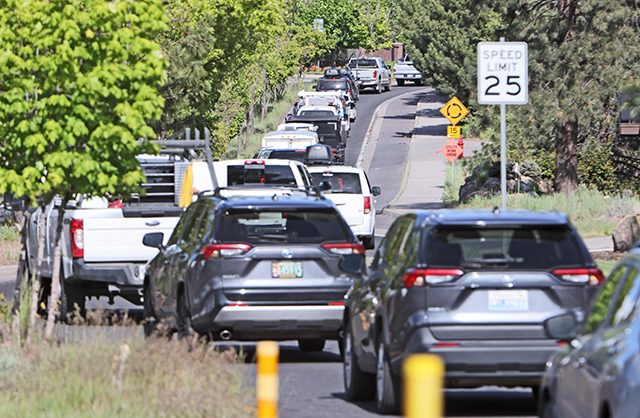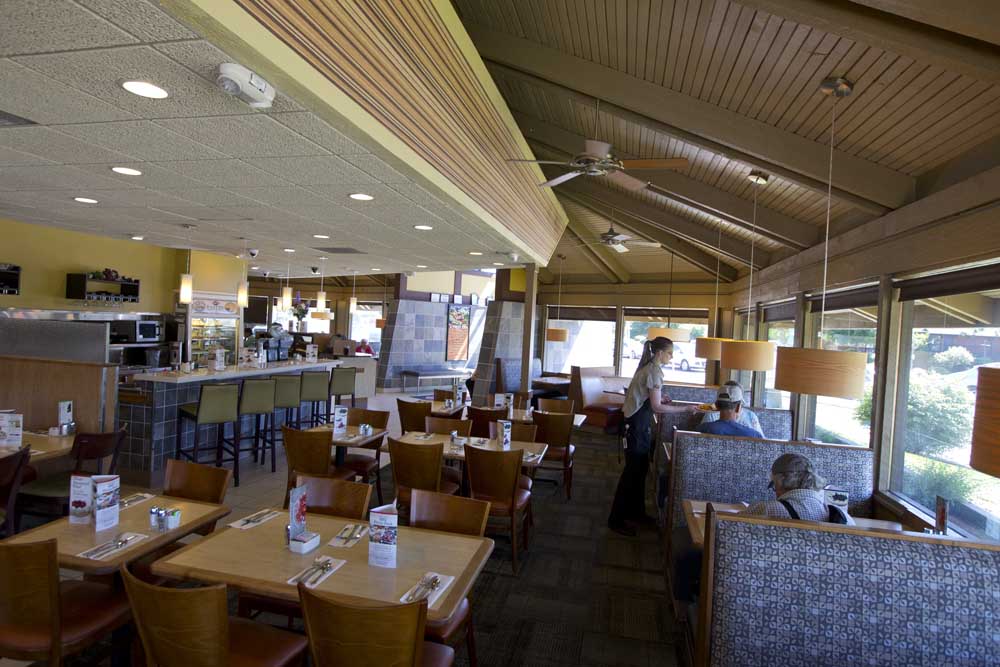Canning tomatoes requires caution
Published 5:00 am Tuesday, September 20, 2011

- Tomatoes these days are lower in acid than the ones your grandmother may have used to make salsa, so to ensure safe home canning, the USDA recommends additional acid and longer processing times. In the case of salsa, use an unaltered recipe that complies with USDA guidelines.
For such a simple, unassuming piece of produce, the tomato has certainly fanned the fires of controversy over the last two decades.
It began in 1988 when the U.S. Department of Agriculture released a new set of processing times and procedures for handling the summer tomato crops. They tried desperately to get people to listen to the cold hard facts: Today’s tomatoes are different from the ones your grandmother canned. The new generation of love-apples are fleshier, and some varieties are even lower in acid. Hence, they need additional acidity and processing time to ensure their safety.
But, much to the frustration of these well-intentioned researchers, people keep plugging their ears and gnashing their teeth.
So the researchers have politely cleared their throats and raised their voices: If you’re going to can your tomato crop, you need acid, folks. Something the new tomatoes are slightly deficient in. And you need longer processing times because it takes a longer time for the heat to reach the center of these more-dense tomatoes.
Acid is important in canning tomatoes because it keeps the growth of Clostridium botulinums spores in check. The development of these spores can lead to botulism poisoning under the right conditions.
Over the past several years, many tomato varieties have shown decreased acid contents. Also, many tomato varieties, particularly the Italian Roma types, which are pear-shaped, become overripe before they actually feel soft. That means at the time of use, these tomatoes could be past their stage of ripeness and to the point where sugars increase and acids retreat.
And so, USDA is recommending the addition of acid as an extra measure of safety, and has increased processing times to counteract the fleshier, more dense tomatoes.
Canning safe salsas
A second area of concern to researchers and food professionals who love you is the salsa issue. I’ve spent some exasperating moments on the phone with readers who want me to send them some different recipes for canning salsa. For most, the frustration is that none of the safe-for-canning recipes that they try are “zippy enough.” My frustration with them is that I know they are tuning out every piece of advice I’m relaying regarding the dangers of canning low-acid salsas. Most cooks are only interested in creating some really tasty salsas. Not that I don’t sympathize with them.
Unfortunately, I know that such creativity usually takes the form of extra bell peppers, chilies, celery, onions and garlic. I also know that when such low-acid foods are added to a high-acid tomato-based salsa, the overall acid level drops — possibly to the point where it’s no longer safe to use the boiling-water bath method for preserving. Low-acid salsas would need to be processed in the same manner as a batch of green beans, in your pressure canner.
But just like those polite guys at USDA, I’ll say it one more time: When searching for the perfect salsa recipe to can this season, hold on to two important thoughts: 1. Consider the source, and 2. Don’t fiddle with the formula.
In other words, when canning tomato and vegetable combinations, follow tested recipes found in the USDA publications or other books that comply with USDA’s guidelines, including editions of the “Ball Blue Book” published after 1988, when the new tomato processing procedures were introduced, and Oregon State University Extension Service brochures. If you decide to alter a tested recipe by increasing the vegetables, USDA’s official statement is to plan on freezing the results or storing them in the refrigerator for immediate consumption.
So for those who want to enlist their sun-ripened tomatoes and chilies into shelf-stable salsa duty, but have yet to find a USDA-approved recipe they’re proud to call their own, there is an option: Follow the safe-but-boring recipes found in the USDA publications, or other books that comply with USDA’s guidelines, then, address your inner need to improve upon the formulas in one or both of the recommended methods that follow.
Safely improve a canned salsa
• Zip up the boring recipe before it hits the canning kettle by adding ingredients that won’t significantly alter the level of acid. These include a few extra tablespoons of dried oregano, basil and cumin, for example, or other dried seasonings (but steer clear of fresh herbs).
• Consider your canned salsas as merely the first phase of salsa construction. Then address the dullness factor on an individual basis with each jar you open throughout the year. Before serving, add low-acid ingredients to your heart’s content. Go crazy over roasted garlic and chilies, extra onions, and plenty of celery, corn, and fresh, crunchy cucumbers. Stir in a sprinkling of pine nuts and olives, and a dash of olive oil.
Hotsy Totsy Salsa alternative
Several years back, in an effort to can my own batch of salsa from an extraordinary crop of tomatoes, I made my own attempt to alter a safe-but-boring salsa recipe. After the recipe was published in my column, I got a call from Carolyn Raab, an OSU Extension Foods and Nutrition Specialist. She was concerned that there was not a high enough ratio of tomatoes and vinegar to low-acid vegetables. After I told her that my source for the basic recipe was a USDA recipe, she volunteered to run a pH test on a sample batch to determine the level of acid in the salsa. If it turned out the salsa had a pH of 4.6 or higher, then it would be considered low-acid, and should be canned in a pressure canner. A pH below 4.6 meant that it was indeed an acid food and that the boiling-water bath was a safe canning method.
Test results showed that the pH of Hotsy Totsy Salsa was 4.3, a safe level for boiling water canning. However, at 4.3, there’s little leeway for further experimentation. Just a few more chilies, half a cup more onion, or tomatoes that have increased in pH due to over-ripeness, and chances are that your batch of Hotsy Totsy Salsa would be approaching the questionable zone, making it no longer a safe candidate for boiling-water bath canning.
I’m sharing it with you now. But on your Scout’s honor, you’ve got to promise not to use over-ripe tomatoes or to add any more of the really fun-but-low-acid ingredients until you’re ready to pull a jar from your pantry and pass around the tortilla chips.






